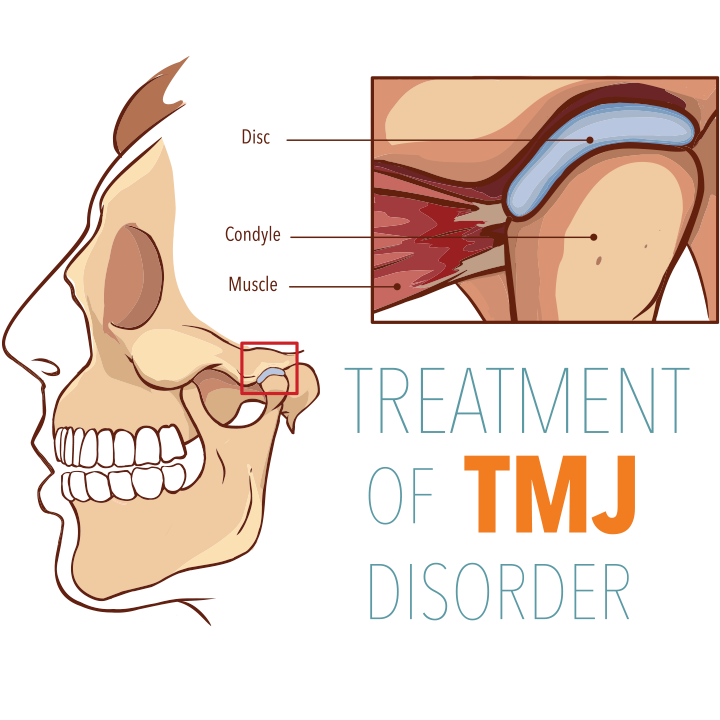
TMJ
The temporomandibular joint connects your jaw bone to your skull.
TMJ Explained
The temporomandibular joint (TMJ) connects your jaw bone (mandible) to your skull (temporal bone). Sitting below the ears and on either side of your face, this joint acts as a hinge for your jaw. There are several muscles, ligaments, and tissues that make your jaw move.
If the jaw joints, facial muscles, or the fit of the upper and lower teeth do not function properly, a TMJ disorder can occur. This disorder is often associated with pain in the jaw/facial region.
Symptoms of TMJ
Several symptoms characterize a TMJ disorder:
Pain or tenderness in the jaw or facial area
Teeth grinding (bruxism)
Difficulty or pain when chewing or moving the jaw
A clicking sound when the jaw opens or closes
Locking of the jaw
Limited jaw range of motion
Headaches associated with facial pain
The symptoms and signs may not be the same for everyone. There are many people who suffer from TMJ but haven’t been diagnosed. If you are suffering from any of these symptoms, you should schedule an exam with State Avenue Dental Office as soon as possible.
Causes of TMJ
Trauma, such as whiplash from a car accident, or genetics can cause dislocation of the jaw or joints. Repetitive or prolonged chewing, yawning, bruxism, or teeth grinding could also contribute to a TMJ disorder.
Diagnosis and Treatment
The severity of the disorder can vary from person to person. TMJ can seriously decrease your quality of life depending on your symptoms and causes.
In some cases, palpitations of the joint and jaw area are enough to say you have TMJ. In other cases, an X-ray is necessary in order to be sure.
Our providers’ treatment for TMJ will depend on a lot of factors, including your symptoms, their severity, and the underlying cause.
TMJ Treatment can include:
Medication
Oral appliances (such as a mouth guard)
Reconstructive dentistry and oral surgery
Physical therapy for the jaw
Botox
Schedule an appointment with us today
If you think you may be struggling with TMJ. Our team wants to help you achieve a better quality of life. Our providers will tailor their treatment to meet your needs!



